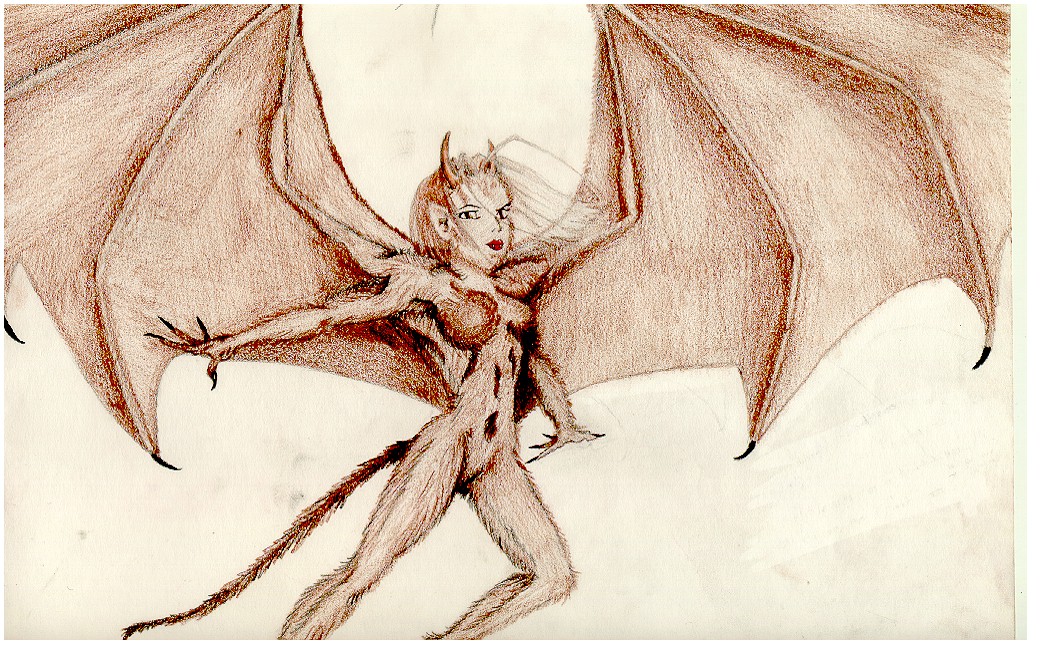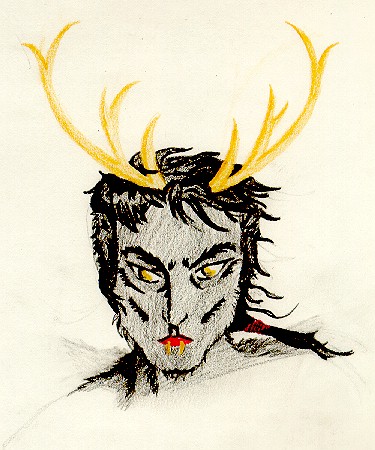
The drawing above depicts a small Yumbrabaul still capable of flight. Click here for an explanation of the anatomy of the Yumbrabaul.
Yumbrabaul
(scientific
name awaiting classification)

The drawing above depicts a small
Yumbrabaul still capable of flight. Click here
for an explanation of the anatomy of the Yumbrabaul.

This drawing shows a large Yumbrabaul. The difference between
the large and small Yumbrabaul can most easily be seen by the presence
of antlers. Large Yumbrabaul have evolved antlers through divergent
evolution. Click here
for an explanation of the anatomical differences between the large and
small Yumbrabaul.
The Yumbrabaul has not been assigned a scientific name yet.
The assignment will be made after biologists have classified the species
with respect to the different groupings
of life.
Top
Study of the Yumbrabaul
According to PBI custom the planet which the Yumbrabaul inhabit
will not be named until all the species have been investigated and found
to be lacking sentience. Should one or more sentient species be found
the planet will be named by them.
The planet of the Yumbrabaul is covered by vast areas that are very similar to tropical rain forests. The Yumbrabaul live in groups referred to as packs. They live in trees and use both their wings and prehensile tails to balance themselves on the tree branches. The Thaough are the most dangerous predators of the Yumbrabaul because they are the largest carnivorous animals other than the Yumbrabaul able to climb trees.
Unobtrusive study techniques will be employed until we can no longer learn about this new species without closer study. Every effort is to be taken not to disturb them. No photographs exist of the Yumbrabaul. In order not to disturb them the only representation of them is limited to artful reproductions. The representations of the skull and arms in the anatomy section were taken from the leavings of a Thaough kill. They will be video recorded in their natural habitat only after we have determined that such recordings will not disturb them. Preliminary studies have shown that; they reproduce in similar numbers to humans, eat meat, and seem to be in the preliminary stages of divergent evolution.
Remote audio surveillance has revealed that the Yumbrabaul do communicate. They grunt and hoot much like apes in the jungles of Earth. They often punctuate many of their sounds by sharply unfurling their wings which makes a whip like cracking sound.
Click here to see the latest PBI file about the expected public reaction once they learn of the Yumbrabaul.


Anatomy of the Yumbrabaul Khuy
Thaough Glossary Back
to the Entrance